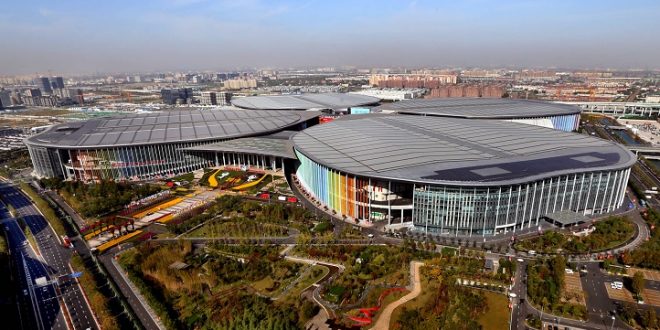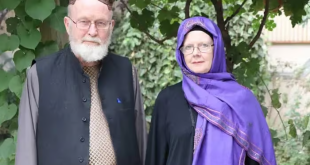By Seddiq Hussainy
SHANGHAI: China is holding its second international import expo in its financial capital Shanghai as an attempt to open its gate to further inbound global trade, giving a brush-off to the west’s anxiety over its alleged trade malpractices amid a long-drawn trade war with the United States. The Nov. 5-10 China International Import Expo hosted thousands of foreign enterprises including world’s 250 leading companies from 150 countries and regions. Over 3,000 companies gathered together with the Chinese buyers in the fair, in what is seen as China’s opening up its domestic markets to increase its imports, helping it extend its economic influence. This is because China wants to ward off the world’s accusations that its door is closed to imports. Some heads of governments and states including Chinese President Xi Jinping and his French counterpart Emanuel Macron attended the meeting of CIIE that saw the presence of business leaders as well as more than 4,300 journalists including 900 representing foreign media outlets. Likewise, a ministerial-level WTO meeting was held on the sidelines of the CIIE, while multiple parallel sessions on AI, WTO reforms, China’s opening up and reforms and other key issues were discussed. The mega event mainly echoes China’s interest in addressing frequent concerns by the EU and US over a trade imbalance and trade surplus. But Chinese President Xi Jinping who inaugurated the expo on Tuesday vowed to level down import tariffs and further open its markets to foreign imports. “China seeks to promote multilateralism and deepen mutual cooperation with EU, APAC, BRICS and the rest of the world,” he promised. Xi pointed out to China’s intentions to give more impetus to a balanced economic globalization and remove impediments to global trade. In his speech, Xi also made bold propositions meant for economic globalization, sustainable growth and enhanced cooperation, while promising to further open up China’s markets and to lower negative list. CIIE is an event proposed to lure global enterprises as part of Chinese President’s vision – socialism with Chinese characteristics – to steer development and beef up Chinese clout in the global chain market. As the world’s second largest economy and most populous country with a rapidly rising middle-income population, China offers a vast market for the whole world and it is already facing a steep upsurge in demand for imports – a gap which could be bridged through a new potential project touted as the Belt and Road Initiative. The BRI offers a more concrete and easy trade and transit and has invested immensely on infrastructural projects in more than 130 host countries and regions. The communist country is already planning to import enormously from other countries. Chinese President Xi Jinping had said in last year’s import exhibition that China expected to import $30 trillion worth of goods and $10 trillion worth of services in the next 2 decades. Its unbridled economic expansion has ringed the alarm in the west that China is too fast in catching up. French President Emanuel Macron in his remarks in the CIIE inauguration raised this concern and sought Europe’s desire to easily trade with China. He was however all applause to China’s development. He said, “China is a nation of inventors. Its economy has transformed greatly.” He also praised China for its strong sense of unity, insisting on cementing bilateral relations between EU and China. On recent China-US frictions, Macron warned, “No one wants trade war. We have seen its consequences. It has hurt global economy”, hoping for an ultimate agreement to end the trade imbroglio. Over the past 40 years since its fundamental reforming and opening up to the world, China’s trajectory to economic development and innovation has been exemplary, especially for developing and landlocked countries. In the recent decade, China has opened several free trade zones in key areas including Shanghai, Tianjin, Guangdong-Macau-Hong Kong great bay area and regions along the Yangtze and Yellow Rivers delta. Afghanistan can bank in Chinese growing market demands to export goods and lower trade deficit. Likewise, Afghanistan can diversify its trade by establishing networks with Chinese business community.
 Afghanistan Times
Afghanistan Times




